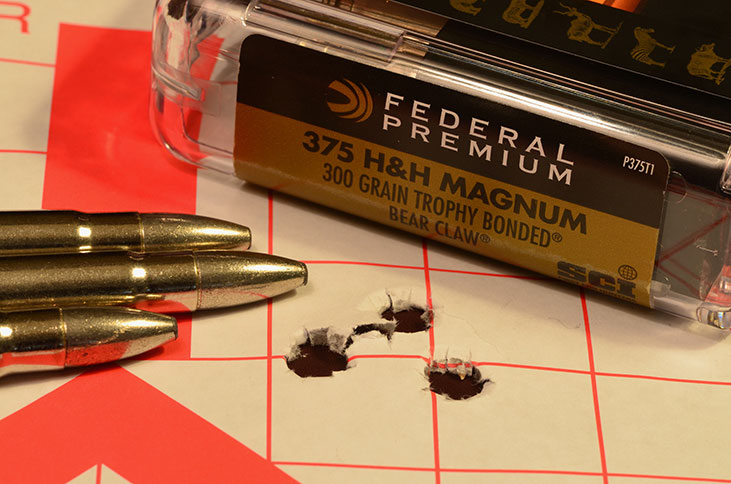He Who Laughs Last
When a company reaches 100 years of age, there’s a temptation to search for parallels, opposites, ironies — any quirky angle on which to hang a story.
In the case of Federal Cartridge, which celebrates its 100th birthday next year, a simple congratulation is really all that’s necessary. Any extra space we have to fill can be more than occupied simply listing some of its many achievements, aside from the simple triumph of still being in business — and very healthy at that — when big names like Winchester and Remington have gone down the tube as independent companies.
Federal dates its official beginnings to 1922, but in fact a company of that name was founded six years earlier. It was in receivership, and its small factory was sitting idle, when Minneapolis businessman Charles Horn bought it out of bankruptcy and started the machines running again.
Initially, it was a shotshell company. Horn wanted to use its expertise at making laminated paper tubes to produce cardboard containers for the BBs made by his other company. Instead, he found himself making 12-gauge ammunition. Up against established giants like Remington and Western (later Winchester-Western), who could (and did) block conventional supply chains, Horn found other ways to sell his product. He wrote letters, travelled the country in his Buick with a trunk full of ammunition, and placed it on shelves in barbershops, pool halls and doctor’s offices. Others in the industry laughed at him, but it worked.

Later, he began making house-brand ammunition for companies like Montgomery Ward and Sears, Roebuck & Co.
This little-guy-versus-the-giants image has stuck to Federal for as long as I’ve been aware of its existence. But when you look back at its history, it’s been a major player in the American ammunition business since the 1930s, and is now, itself, the giant everyone else tries to beat.
While Federal began with shotshells, it moved into the rimfire market in the mid-1920s, and by the ’30s, it was the leader in accurate match ammunition. Centerfire metallic cartridges came at the beginning of the Second World War, and the company produced military munitions. It then entered the civilian centerfire market in 1963.
Federal’s production of serious big-game hunting ammunition is interesting because, as with its initial marketing strategy, it took a novel approach. Here’s what it was up against: Hunters read outdoor magazines and paid attention to what they recommended. Outdoor Life’s Jack O’Connor was the most influential hunting writer, and had a close association with Winchester. Winchester’s best hunting bullet was the Silvertip — easily the most brilliant name given to any hunting bullet ever. Over at Field & Stream, Warren Page had a similar relationship with Remington, and if the Core-Lokt was not as well-known as the Silvertip, it did have adherents.
By the 1970s, Federal’s line of big-game cartridges was struggling. It had no bullet to put up against the Silvertip or Core-Lokt. However, Weatherby had been marketing its own Norma-made Weatherby ammunition for years, and offered factory loads with Nosler Partitions at a premium price. “Why not?” thought Federal, and it cut a deal to put Nosler Partitions in Federal ammunition. At the same time, they began loading the superbly accurate Sierra MatchKing bullets in what became Federal Gold Medal Match .308s.
A friend who worked for Federal at the time told me that this decision saved Federal’s centerfire rifle line. Companies like Nosler and Sierra promoted their premium bullets, and Federal could benefit from their reputations and advertising, as well as the breathless accounts of outdoor writers as to their efficacy on big animals.
At the same time, it offered hunters and shooters premium performance without the necessity of handloading. Soon, it was offering the Swift A-Frame as well, and later Woodleigh WeldCores. Finally, in 1992, Federal bought the rights to Jack Carter’s superb Trophy Bonded Bear Claw and Trophy Bonded became its in-house premium game bullet.
All through the ’90s, Winchester-Western and Remington suffered from the “not invented here” syndrome, even to the point of denying outright, to myself and others, that there was any such thing as a “premium” big-game bullet.
This is just one of dozens of stories that could be told about Federal Cartridge, which now anchors the Vista Outdoor group, and includes names like CCI, Speer, Alliant Powder, Hoppe’s, and RCBS.
And, we have room for one brief irony. Vista’s most recent acquisition is Remington Ammunition, bought out of bankruptcy after a turbulent 30 years. Wherever he is, Charles Horn has the last laugh.–Terry Wieland
Terry Wieland is a recognized authority on fine firearms. He has written several books on guns and hunting, has hunted around the world and returns to Africa as often as possible. He lives in Fenton, Missouri.

